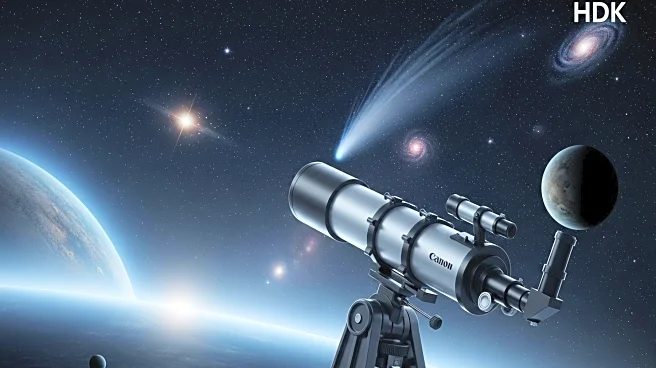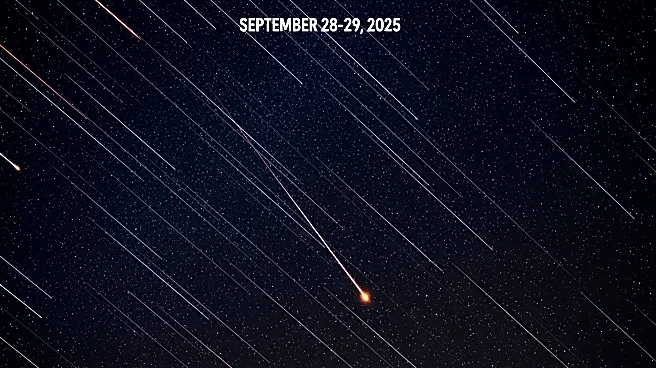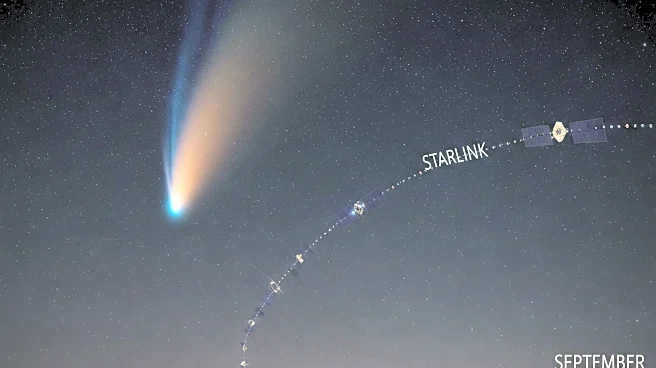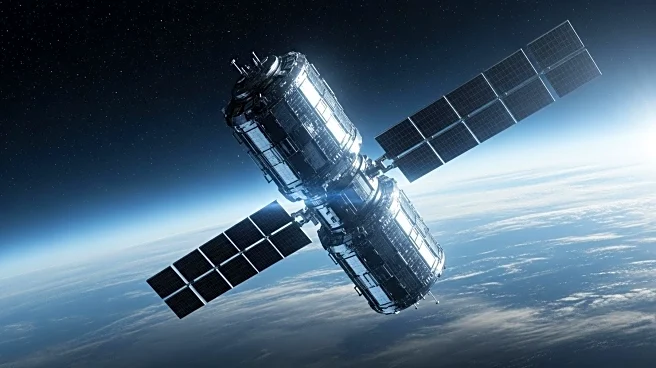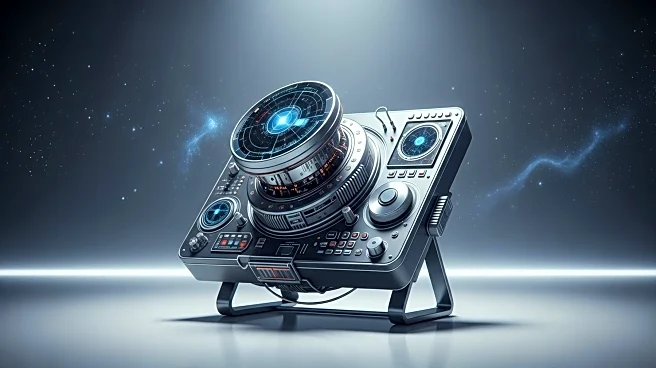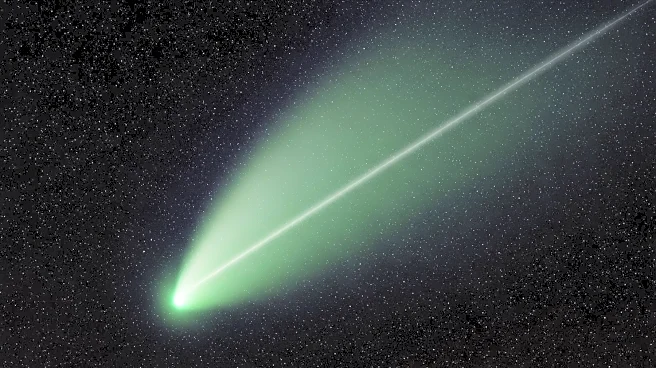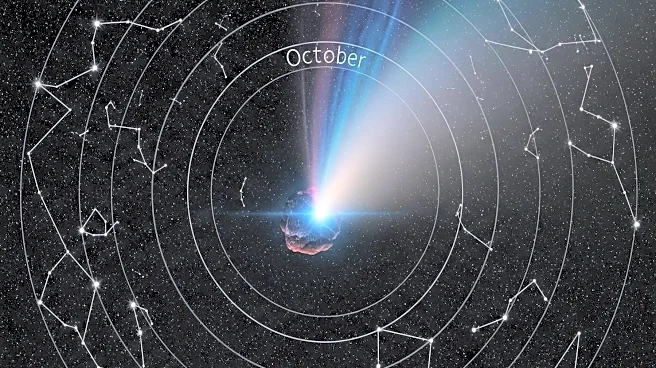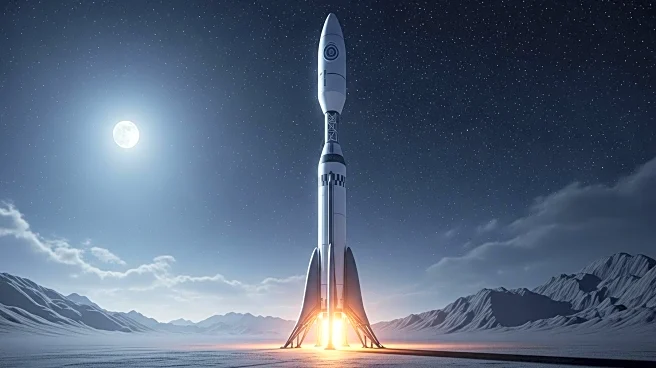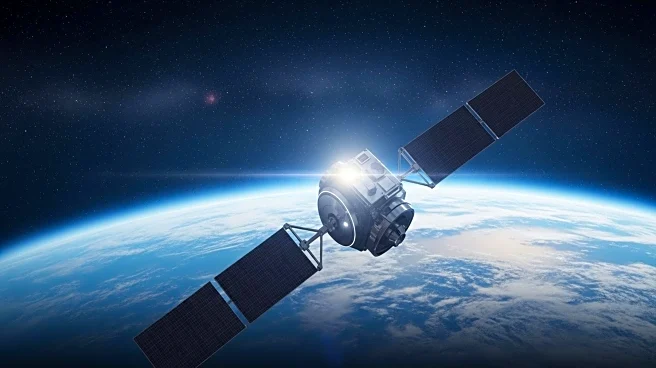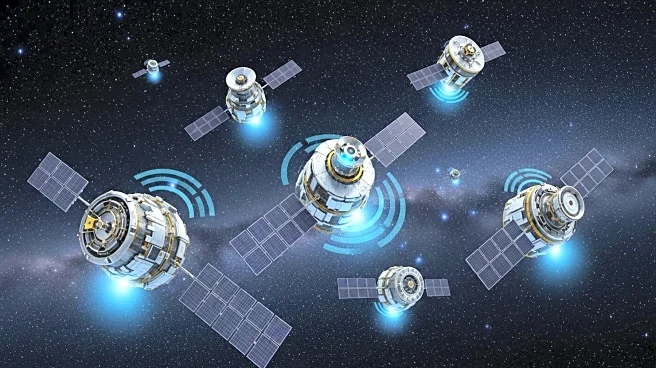What's Happening?
The NOAA Space Weather Prediction Center (SWPC) has forecasted calm to mildly unsettled space weather conditions for September 29-30, 2025, with planetary Kp indices not exceeding 4. No significant geomagnetic storms are expected, and any Northern Lights will be confined to high latitudes above the Arctic Circle. The Southern Taurids meteor shower is active but weak, with an expected rate of up to three meteors per hour around local midnight. Sporadic meteors will dominate the sky, with approximately ten per hour visible pre-dawn in the Northern Hemisphere. SpaceX recently launched a batch of Starlink satellites, which may be visible as a 'train' of lights in the sky after sunset or before sunrise. Comet C/2025 R2 (SWAN) is also visible in the western twilight, appearing as a small smudge under dark skies.
Why It's Important?
The forecast of calm space weather is significant for various stakeholders, including those in the communications and power sectors, as it suggests minimal disruption to radio communications, GPS, and power grids. The limited visibility of auroras and meteor showers may disappoint skywatchers, but it ensures that technological systems remain stable. The visibility of the Starlink satellite train and Comet SWAN offers unique opportunities for amateur astronomers and enthusiasts to observe these phenomena. The absence of major space weather events means that emergency services and utility operators can maintain routine operations without additional precautions.
What's Next?
Skywatchers are advised to monitor updates from NOAA and other space weather agencies for any changes in conditions. While the forecast predicts calm weather, space weather can be unpredictable, and sudden changes could occur. Observers interested in viewing the Starlink satellite train or Comet SWAN should check tracking tools for optimal viewing times. The Southern Taurids meteor shower will continue to be active until November 12, offering more opportunities for observation. Stakeholders in the communications and power sectors will continue routine monitoring to ensure systems remain unaffected by any minor space weather disturbances.
Beyond the Headlines
The calm space weather forecast highlights the importance of ongoing monitoring and prediction efforts by agencies like NOAA, which play a crucial role in safeguarding technological infrastructure from potential disruptions. The visibility of human-made satellites and natural celestial events underscores the interconnectedness of space exploration and observation, providing educational and recreational opportunities for the public. The limited aurora activity serves as a reminder of the dynamic nature of space weather and its impact on both natural phenomena and human activities.

